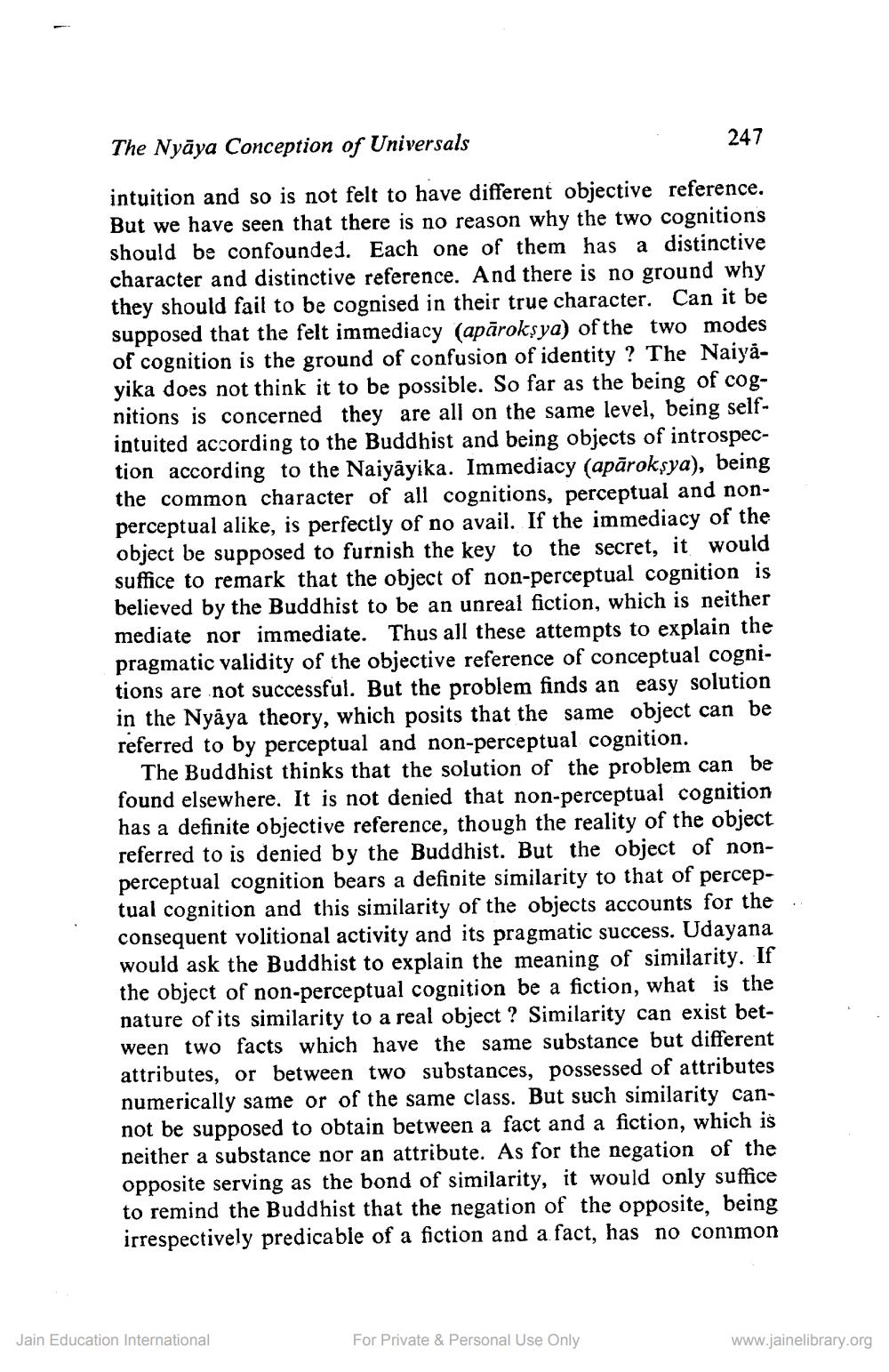________________
The Nyāya Conception of Universals
247
intuition and so is not felt to have different objective reference. But we have seen that there is no reason why the two cognitions should be confounded. Each one of them has a distinctive character and distinctive reference. And there is no ground why they should fail to be cognised in their true character. Can it be supposed that the felt immediacy (apāroksya) of the two modes of cognition is the ground of confusion of identity ? The Naiyayika does not think it to be possible. So far as the being of cognitions is concerned they are all on the same level, being selfintuited according to the Buddhist and being objects of introspection according to the Naiyāyika. Immediacy (apārokşya), being the common character of all cognitions, perceptual and nonperceptual alike, is perfectly of no avail. If the immediacy of the object be supposed to furnish the key to the secret, it would suffice to remark that the object of non-perceptual cognition is believed by the Buddhist to be an unreal fiction, which is neither mediate nor immediate. Thus all these attempts to explain pragmatic validity of the objective reference of conceptual cognitions are not successful. But the problem finds an easy solution in the Nyāya theory, which posits that the same object can be referred to by perceptual and non-perceptual cognition.
The Buddhist thinks that the solution of the problem can be found elsewhere. It is not denied that non-perceptual cognition has a definite objective reference, though the reality of the object referred to is denied by the Buddhist. But the object of nonperceptual cognition bears a definite similarity to that of perceptual cognition and this similarity of the objects accounts for the consequent volitional activity and its pragmatic success. Udayana would ask the Buddhist to explain the meaning of similarity. If the object of non-perceptual cognition be a fiction, what is the nature of its similarity to a real object ? Similarity can exist between two facts which have the same substance but different attributes, or between two substances, possessed of attributes numerically same or of the same class. But such similarity cannot be supposed to obtain between a fact and a fiction, which is neither a substance nor an attribute. As for the negation of the opposite serving as the bond of similarity, it would only suffice to remind the Buddhist that the negation of the opposite, being irrespectively predicable of a fiction and a fact, has no common
Jain Education International
For Private & Personal Use Only
www.jainelibrary.org




